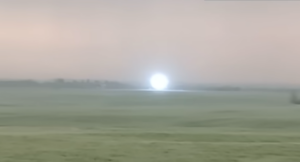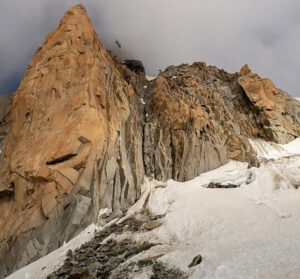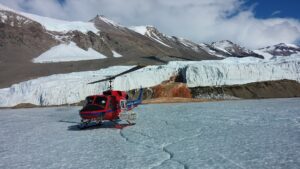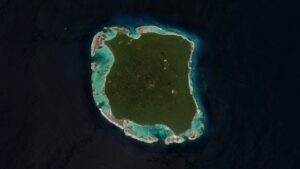Herders in Mongolia are undergoing an unusually harsh winter — or at least, one that used to be unusually harsh.
“Dzud” winters feature a punishing combination of extreme cold, heavy snow, and high winds. While Mongolian winters are cold in general, these frigid seasons are exceptional. They’re also uniquely threatening to the country’s herders and livestock.
If sheep and goats can’t reach grass beneath heaps of snow and sheets of ice, even the woolliest animals are less likely to survive the extreme temperatures.
To make matters worse, summer droughts often precede dzuds. These conditions happened last year and are worsening due to climate change, the Yale School of the Environment reported.
The upshot is grim. About 190,000 herder households and 64 million livestock animals are “struggling with inadequate feed, skyrocketing prices and heightened vulnerabilities” this winter, according to United Nations officials in Mongolia.
Reports indicated the most snowfall in 49 years and 668,000 livestock dead.
This February, 90% of the country faced the threat.

Graphic: United Nations
Snow the height of a ger
That’s after January snowfall amounted to nearly double the long-term national average — an average which has climbed 40% since 1961. Despite government efforts to clear roads, 13,500 households were snowed in and cut off from basic services, as of early 2024.
“I’ve never seen snow that is equal to the height of a ger in my life,” Tserenbadam G., a nomad in her 70s, told Yale’s e360.
“Extreme cold and windy weather weaken animals and lead to starvation; pregnant livestock miscarry or die. Young animals are at greater risk of death,” the UN reported. “The aftermath destroys the livelihood of many herding households.”
According to Yale, a dzud used to occur about once every 10 years. But these days, they have featured in six of the last 10 Mongolian winters.
The winter of 2023-4 especially bad
This year’s is especially severe. In a “white” dzud, very deep snow cuts off animals from grasses. In an “iron” dzud, a rapid, hard freeze follows a brief thaw, which locks pastures in ice. Both sets of conditions exist this winter.
Combined, the UN and Mongolian Democratic Party have proposed over $6 million in aid funding. Relief measures include road clearing and free feed for livestock. However, herders are concerned the resources will fall short of the need.
UN seeks $6.3 million to combat #dzud in #Mongolia. Approximately 90 per cent of the country is facing a high or extreme dzud risk, imperiling millions of livestock and livelihoods. https://t.co/0BiHKhIqiK
📷 FAO/Z. Zolzaya pic.twitter.com/ZcAsdJL9BB
— ReliefWeb (@reliefweb) February 20, 2024
Split between hundreds of thousands of people and millions of animals, the funding would only cover a sack or two of feed per household, herders explained. One sack sustains a sheep for about a week.
And while herders braced for this year’s dzud by slaughtering their weakest animals early, the strategy may further weaken Mongolian rangelands in the long run. Grazing pressure has increased with growing nomad populations, and land fertility is suffering overall.
Mongolia’s Ministry of the Environment and Tourism linked 49 percent of desertification in the country to overgrazing. The rest, officials estimated, is linked to climate change.
Official high-alert conditions will persist until May 15, the World Health Organization advised. Early weather forecasts for March called for more snow accumulation.






